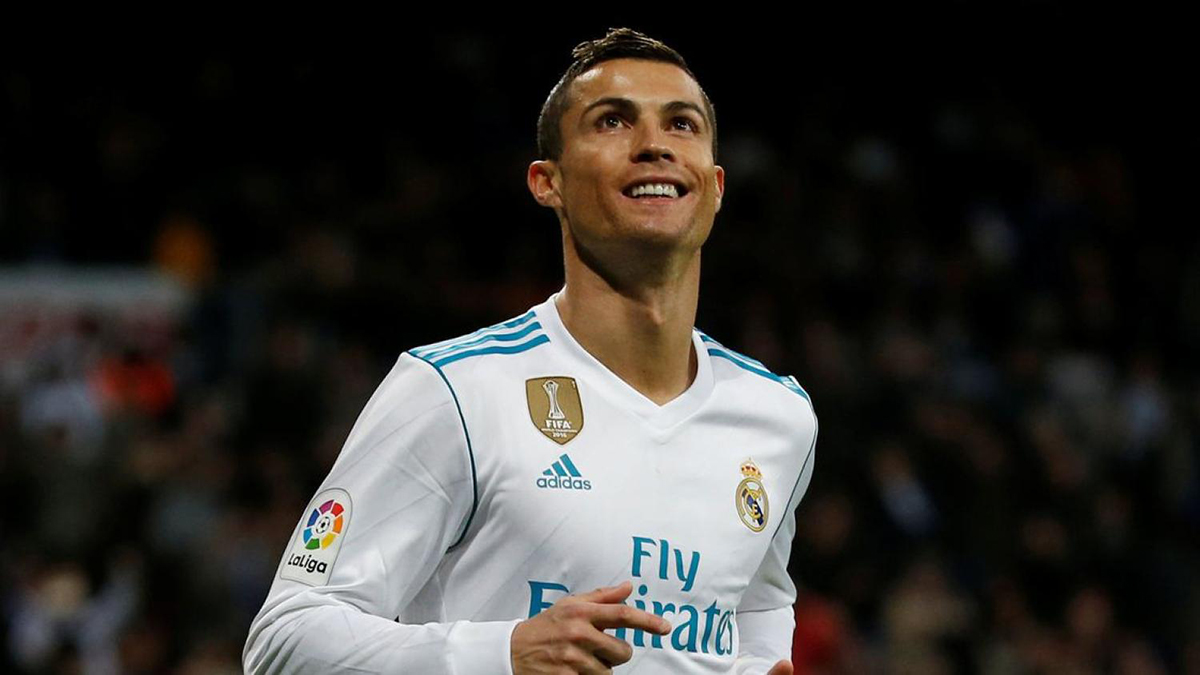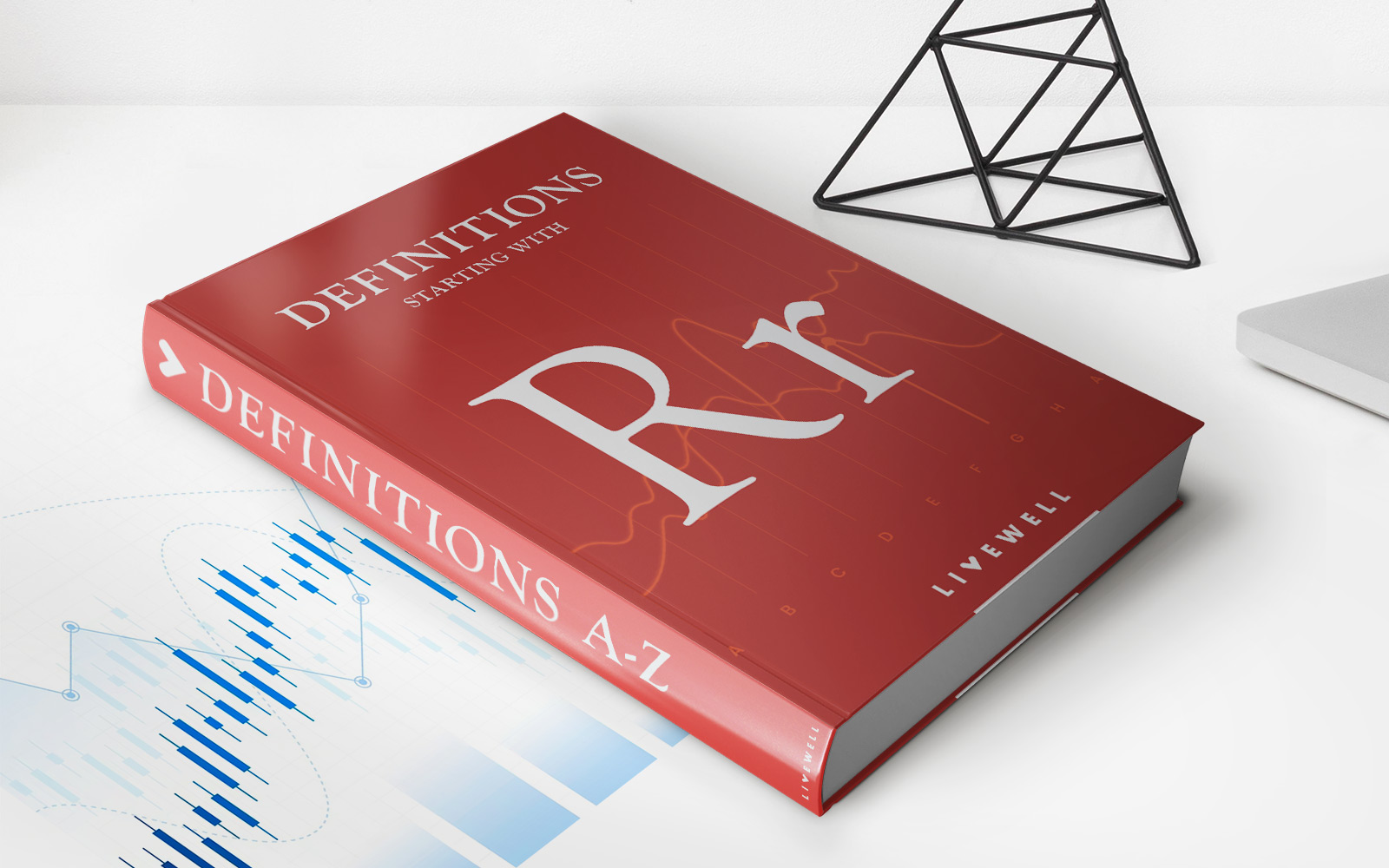

Finance
How Soccer Buyouts Are Determined
Modified: December 30, 2023
Discover the intricate world of soccer buyouts and how they are determined, exploring the fascinating intersection of finance and the world's most popular sport.
(Many of the links in this article redirect to a specific reviewed product. Your purchase of these products through affiliate links helps to generate commission for LiveWell, at no extra cost. Learn more)
Table of Contents
- Introduction
- The Role of Market Value in Soccer Buyouts
- Factors Affecting Soccer Buyouts
- Transfer Fees and Player Performance
- The Influence of Club Reputation on Buyouts
- The Role of Agents in Negotiating Buyouts
- The Impact of Economic Factors on Soccer Buyouts
- The Role of Supply and Demand in Determining Buyouts
- Conclusion
Introduction
In the world of professional soccer, player transfers are not only exciting events for fans, but they also involve complex negotiations and significant financial transactions. One of the key aspects of player transfers is the determination of buyout fees, which play a crucial role in the success of these deals.
Buyout fees, also known as transfer fees, are the monetary compensation paid by one club to another for the acquisition of a player’s rights. These fees are influenced by various factors, including the market value of the player, their performance on the field, the reputation of the club involved, and the economic factors affecting the soccer industry.
The determination of soccer buyouts is not a straightforward process. It involves a careful assessment of numerous factors to ensure that the fee accurately reflects the player’s value and the financial investment required to secure their services. This article will delve into the intricacies of how soccer buyouts are determined, and the various factors that come into play.
In the following sections, we will explore the role of market value in soccer buyouts, the factors that can affect these fees, the influence of player performance and club reputation, the role of agents in negotiating buyouts, the impact of economic factors, and the role of supply and demand in determining buyout fees.
By understanding these factors, players, clubs, and fans can gain a deeper insight into the financial aspects of the beautiful game, and appreciate the complexities involved in player transfers and buyout negotiations.
The Role of Market Value in Soccer Buyouts
Market value plays a fundamental role in determining the buyout fees of soccer players. It is the estimated worth of a player in the current market based on their skills, performance, age, and potential. The market value serves as a benchmark for clubs to determine a fair price for the transfer of a player.
Several factors contribute to the calculation of a player’s market value. Performance on the field is one of the most significant factors. A player who consistently performs at a high level, scoring goals, providing assists, and displaying exceptional skills, is likely to have a higher market value than someone who underperforms.
Age also plays a vital role in determining market value. Younger players with potential for growth and development are often valued higher due to their potential longevity and the opportunity for clubs to mold them into star players. On the other hand, older players, especially those nearing the end of their careers, may have a lower market value due to their declining performance and limited longevity.
Additionally, the prestige of the league and the club the player represents can influence their market value. Players competing in high-profile leagues like the English Premier League or La Liga are often valued higher due to the increased exposure and competition level of these leagues. Similarly, players representing renowned clubs with a rich history and global fan base tend to have a higher market value.
Market value is not a fixed number and can fluctuate based on various factors. Strong performances in major tournaments, such as the FIFA World Cup or UEFA Champions League, can significantly boost a player’s market value. Conversely, injuries or prolonged periods of poor performance can lead to a decline in their market value.
Clubs consider market value as a starting point for their negotiations in player transfers. This value provides a baseline from which future negotiations can take place. However, it is essential to note that market value is not the sole determining factor, as clubs may also take into account other variables such as the player’s contractual situation, demand from other clubs, and the financial resources of the buying club.
Understanding the role of market value in soccer buyouts is crucial for players, clubs, and investors involved in player transfers. It allows them to make informed decisions based on the current market conditions and the perceived value of a player, ultimately leading to fair and successful buyout negotiations.
Factors Affecting Soccer Buyouts
Several factors come into play when determining the buyout fees of soccer players. These factors can have a significant impact on the final price agreed upon between clubs. Understanding these factors is crucial for clubs, players, and agents to navigate the complex world of player transfers effectively.
1. Player Performance: The performance of a player on the field is one of the primary factors influencing their buyout fee. Clubs are willing to pay a premium for players who consistently excel, demonstrate exceptional skills, and contribute significantly to their teams. The track record of a player and their ability to perform under pressure can greatly impact their market value.
2. Age and Potential: The age of a player is another critical factor affecting buyout fees. Younger players with high potential and a long career ahead are often valued more, as clubs see them as investments for the future. On the other hand, older players with limited playing years remaining may have lower buyout fees due to their shorter-term value to clubs.
3. Contractual Situation: The contractual situation of a player can have a significant influence on their buyout fee. Players with long-term contracts and multiple years remaining on their deals are generally more expensive to acquire, as clubs must compensate the selling club for the remaining contract value. Conversely, players with expiring contracts or in the final year of their deals may have lower buyout fees, as their selling club may want to avoid losing them for free.
4. Club Reputation: The reputation and stature of the club involved in the transfer can impact the buyout fee. Clubs with a rich history, recent success, and a large fan base may have the financial capacity to demand higher fees for their players. Additionally, playing for a prestigious club can enhance a player’s market value, leading to increased buyout fees.
5. Competition and Demand: The level of competition and the number of clubs interested in acquiring a player can drive buyout fees higher. If multiple clubs are vying for the same player, it creates a bidding war, increasing the final transfer fee. This is especially true for high-profile players who are in high demand due to their exceptional skills and reputation.
6. Financial Resources: The financial resources of the buying club also play a role in determining buyout fees. Clubs with significant financial backing and resources can afford to pay higher fees for sought-after players. On the other hand, clubs with limited financial resources may need to negotiate more favorable terms or seek out lesser-known talents with lower price tags.
It’s important to note that these factors are not mutually exclusive, and multiple elements can influence buyout fees simultaneously. Clubs and agents must carefully consider these factors and negotiate based on the specific circumstances surrounding each player transfer.
Transfer Fees and Player Performance
Player performance is one of the most significant factors influencing the transfer fees of soccer players. Clubs are willing to invest substantial sums of money to acquire players who have demonstrated outstanding skills, consistency, and the ability to make a significant impact on the field.
When evaluating a player’s performance, several key metrics are taken into consideration. These metrics include goals scored, assists provided, defensive contributions, passing accuracy, dribbling success rate, and overall influence on the team’s performance. Players who consistently excel in these areas and contribute to their team’s success are highly sought after and command higher transfer fees.
Scoring goals is perhaps the most visible and impactful aspect of a player’s performance. Strikers who consistently find the back of the net are in high demand, as they have the potential to turn matches in their team’s favor. The ability to score goals consistently boosts a player’s market value and can result in significant transfer fees.
In addition to goal-scoring, assists are also highly valued. Players who possess excellent vision, passing ability, and creativity in setting up their teammates are highly sought after. Assists can often be as influential as goals and demonstrate a player’s ability to create scoring opportunities for others.
Defensive contributions also play a role in determining transfer fees. Players who excel in defensive duties, such as interceptions, tackles, and positioning, are highly valued by clubs. Their ability to prevent goals and provide defensive stability can significantly impact a team’s success, making them attractive targets for transfer.
Passing accuracy and dribbling success rate are additional performance aspects that affect transfer fees. Players who can effectively distribute the ball, maintain possession, and make accurate passes are highly sought after. Similarly, players with exceptional dribbling skills that can beat opponents and create scoring opportunities garner attention from clubs willing to pay a premium.
It’s important to note that player performance is not solely determined by statistics. Clubs also consider intangible qualities such as leadership, work rate, versatility, and adaptability. A player’s ability to elevate their teammates and contribute positively to the team dynamic can significantly impact their transfer value.
Top performers in major competitions, such as international tournaments or continental championships, often see their transfer fees rise due to their ability to excel and gain recognition on a global stage. A standout performance in a high-profile tournament can generate significant interest from clubs, resulting in increased transfer fees.
In summary, player performance is a crucial factor in determining transfer fees. Goals, assists, defensive contributions, passing accuracy, and overall impact on a team’s success all influence a player’s market value. Standout performances in major competitions can also lead to an increase in transfer fees. Clubs are willing to invest heavily in players who can consistently perform at a high level and make a significant impact on the field.
The Influence of Club Reputation on Buyouts
The reputation of a club has a significant influence on the buyout fees of soccer players. Clubs with a strong reputation, rich history, and a track record of success are often able to demand higher fees when selling their players. On the other hand, clubs with a less-established reputation may need to settle for lower transfer fees.
One of the main reasons why club reputation affects buyouts is the perception of quality and professionalism associated with the club. Top-tier clubs with a renowned reputation are seen as more attractive destinations for players. They often have larger budgets, better facilities, and a higher chance of competing for titles. As a result, players may be more inclined to join these clubs, leading to increased demand and subsequently higher transfer fees.
Additionally, playing for a prestigious club can enhance a player’s market value. The exposure and visibility gained from representing a reputable club can increase a player’s appeal to potential buyers. Furthermore, a player’s performances for a well-respected club are given more weight and attention by scouts, agents, and other clubs. This increased exposure can result in higher transfer fees for the player when they are eventually sold.
Club reputation also impacts the perception of a player’s potential. Players who have succeeded at reputable clubs are often seen as having a higher chance of replicating their success elsewhere. As a result, clubs may be willing to pay a premium for players who have proven themselves at renowned clubs, as they believe they will seamlessly integrate into their own squad and contribute to their success.
However, it’s important to note that club reputation is not the sole determinant of buyouts. Factors such as player performance, age, contractual situation, and demand from other clubs also play a role. While a reputable club may have the advantage of commanding higher fees due to their standing in the soccer world, other variables must still align for a successful transfer negotiation to take place.
In summary, club reputation significantly influences buyout fees in soccer. Reputable clubs with a history of success and a strong brand image can demand higher fees when selling their players. The perception of quality, exposure, and the potential for future success associated with reputable clubs all contribute to increased demand and, consequently, higher transfer fees.
The Role of Agents in Negotiating Buyouts
Agents play a crucial role in the negotiation of buyout fees in soccer transfers. These individuals act as intermediaries between players, clubs, and other involved parties, working to secure the best possible deal for their clients. Their expertise, networks, and negotiation skills are instrumental in determining the final transfer fees.
One of the primary responsibilities of agents is to assess the market value of their clients accurately. They evaluate various factors such as player performance, age, contractual situation, and demand from other clubs to determine a fair price range for their clients. Armed with this knowledge, agents can negotiate more effectively on behalf of their players.
Agents use their extensive networks and contacts within the soccer industry to identify potential suitors for their clients. They establish relationships with sporting directors, club owners, and other key decision-makers, which can play a vital role in securing favorable buyout deals. By leveraging these connections, agents strive to create competition between clubs interested in their players, driving up the transfer fees.
Negotiation skills are paramount for agents in securing the best possible buyout fees. They navigate the complexities of contractual terms, payment structures, and other financial details to negotiate a deal that maximizes their client’s earning potential. Skilled agents know how to position their clients’ value, highlighting their strengths and unique selling points to negotiate higher transfer fees.
Agents also handle the contractual aspects of the transfer, ensuring that all legal requirements are met and protecting their clients’ interests. They review the terms and conditions, negotiate wages, bonuses, and other financial incentives, and ensure that the contract aligns with their client’s goals and ambitions.
Furthermore, agents provide counsel and guidance to their clients throughout the negotiation process. They help players understand the market conditions, evaluate offers, and make informed decisions that align with their career aspirations. The expertise and industry knowledge of agents can be invaluable in guiding players towards the best possible buyout deals.
It’s important to note that, while agents play a critical role in negotiating buyouts, their involvement also comes with financial considerations. Agents typically charge a commission based on the transfer fee or the player’s contract. This fee structure serves as an incentive for agents to secure higher transfer fees, as it directly impacts their earnings.
In summary, agents serve as invaluable assets in the negotiation of buyout fees in soccer transfers. Their expertise in player valuation, networks within the industry, negotiation skills, and guidance throughout the process all contribute to securing the best possible deals for their clients. The role of agents extends beyond financial negotiations, as they provide support and guidance to players as they navigate the complex world of player transfers.
The Impact of Economic Factors on Soccer Buyouts
Economic factors have a profound influence on soccer buyouts, shaping the financial dynamics of the sport and impacting the transfer fees of players. These factors encompass various elements, including the overall health of the global economy, inflation, exchange rates, and the financial resources available to clubs.
One of the key economic factors that affect buyouts is the financial state of the global economy. During periods of economic growth and stability, clubs tend to have more resources available to invest in player transfers. They may be more willing to pay higher fees for sought-after players due to increased revenue and financial confidence.
Conversely, during economic downturns or times of financial uncertainty, clubs may become more cautious with their spending. Reduced revenue streams and financial pressures may lead to a decrease in transfer fees, as clubs have limited resources to allocate towards player acquisitions.
Inflation is another economic factor that can impact buyouts. Inflation refers to the increase in prices of goods and services over time. In the soccer context, inflation can affect transfer fees as players’ market values adjust to reflect changes in the cost of living. Inflation can result in higher transfer fees, as the value of money decreases over time.
Exchange rates also play a role in determining buyout fees, especially when clubs and players are conducting international transfers. Exchange rate fluctuations between different currencies can impact transfer fees, making it more or less expensive for clubs from different countries to acquire players. A strong currency can result in increased transfer fees for clubs purchasing players from countries with weaker currencies.
Furthermore, the financial resources available to clubs significantly impact buyouts. Wealthy clubs with significant financial backing, such as those owned by wealthy individuals or corporate entities, are often able to pay higher transfer fees than clubs with more limited financial resources. The financial strength of clubs can create disparities in the ability to acquire and retain top talent, as some clubs have more financial firepower to secure high-profile signings.
It’s important to note that economic factors are not static and can vary over time. Changes in economic conditions, such as recessions, market crashes, or unexpected events, can have swift and significant impacts on soccer buyouts. These shifts can result in sudden changes in transfer fees and player valuations as clubs adapt to the new economic realities.
In summary, economic factors play a significant role in shaping soccer buyouts. The health of the global economy, inflation, exchange rates, and the financial resources available to clubs all impact the transfer fees of players. Clubs must navigate these economic factors effectively to make informed decisions and secure favorable buyout deals.
The Role of Supply and Demand in Determining Buyouts
Supply and demand dynamics play a crucial role in determining buyout fees in the world of soccer. The interaction between the supply of players available for transfer and the demand for their services heavily influences the negotiation process and ultimately impacts the transfer fees paid by clubs.
Supply refers to the availability of players who are open to a transfer. It includes factors such as contractual situations, player willingness, and clubs’ decisions to make players available for transfer. When the supply of players in a particular position or skill set is limited, it can drive up the transfer fees as clubs compete for a smaller pool of desirable talents.
On the other hand, when the supply of players exceeds the demand, it can lead to lower transfer fees. Clubs have more options to choose from, and they can negotiate from a position of strength, potentially securing players at a more favorable price.
Demand represents the desire and interest from clubs to acquire specific players. This can be influenced by various factors, including the team’s needs, player reputation, performance track record, marketability, and the club’s financial capabilities. When multiple clubs express interest in the same player, it creates competition, driving up the demand and subsequently increasing the transfer fee.
Factors such as player performance, age, potential, and marketability can create high demand for certain players and position them as highly sought after assets in the transfer market. Clubs strive to secure these players’ services, and they may be willing to pay a premium to outbid rival clubs and secure their desired targets. Conversely, players with limited demand may have reduced bargaining power, leading to lower transfer fees.
Additionally, economic factors, such as the financial health and resources of the clubs involved, can influence the demand for players. Wealthier clubs with substantial financial backing may have a higher demand for top talents and more significant resources to meet the transfer fees. These clubs can outbid competitors and secure players at higher prices, creating an imbalanced supply and demand scenario.
Supply and demand fluctuate constantly in the transfer market, affecting buyout fees. Market trends, changes in performance, injuries, and other external factors can impact the perceptions of both supply and demand. The balancing act between supply and demand is integral to the negotiation process, with clubs and agents leveraging these dynamics to establish fair transfer fees.
Ultimately, supply and demand dynamics are central to determining buyout fees in soccer transfers. The availability of players, their desirability, and the competition among clubs ultimately shape the financial terms of transfers. Clubs must carefully assess the supply and demand dynamics to make informed decisions and secure favorable buyout deals.
Conclusion
Soccer buyouts are complex and multifaceted processes that involve the negotiation of transfer fees for players. Several key factors come into play when determining these fees, including market value, player performance, club reputation, the role of agents, economic factors, and supply and demand dynamics.
Market value serves as a baseline for buyout negotiations, considering factors such as player performance, age, and the prestige of the league and club. Performance on the field, including goals scored, assists provided, and defensive contributions, significantly influences a player’s market value and subsequent transfer fee.
The reputation of a club can also impact buyouts, as reputable clubs command higher fees due to their stature and potential for success. Agents play a crucial role in negotiating buyouts, using their expertise, networks, and negotiation skills to secure favorable deals for their clients.
Economic factors, such as the state of the global economy, inflation, and exchange rates, can influence buyout fees. The financial resources of clubs also play a role, with wealthier clubs having more capacity to pay higher fees.
Supply and demand dynamics are key determinants of buyout fees, with limited supply and high demand leading to increased fees. Conversely, an excess supply of players can result in lower transfer fees as clubs have more options to choose from.
In conclusion, understanding the intricacies of soccer buyouts is essential for players, clubs, and agents involved in player transfers. By considering market value, player performance, club reputation, economic factors, and supply and demand dynamics, stakeholders can navigate the negotiation process effectively and secure successful buyout deals.
As the soccer industry continues to evolve, it is crucial to adapt to changing market conditions and consider the various factors discussed in this article. With a deep understanding of how soccer buyouts are determined, players and clubs can make informed decisions, optimize their financial strategies, and ensure the successful acquisition and transfer of talent.














